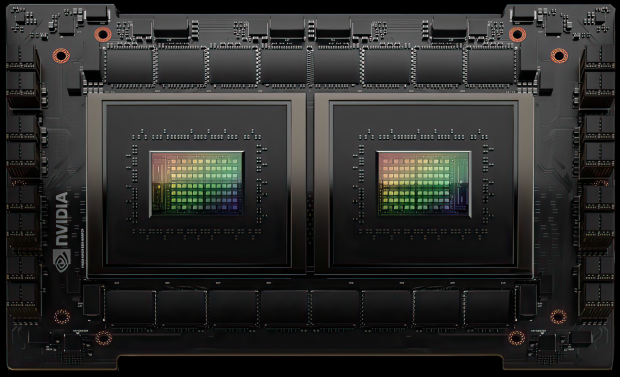The CPU market is dominated by Intel and AMD, but NVIDIA has its Arm-based Grace CPU that is flexing its CPU muscle in a new Geekbench benchmark, showing some impressive results for the 72-core Arm-based processor.

VIEW GALLERY – 3 IMAGES
NVIDIA designed its Grace CPU for high-performance computing (HPC) requirements in the server and data center ecosystems, with the GH200 Superchip offering the fastest AI performance right now, that is, until NVIDIA’s new Blackwell-based GB200 Superchip arrives later this year (rocking dual B200 AI GPUs and a Grace CPU).
Inside, the NVIDIA Grace CPU is based on the Arm architecture, with 72 Arm Neoverse N2 cores, with LPDDR5X memory on the motherboard and two distinct, different platforms. The Grace Superchip with not one, but two Grace GPUs for a total of 144 cores, and the Grace Hopper Superchip with the 72-core Grace CPU and Hopper H200 AI GPU. Each chip features 117MB of L3 cache, 68 PCIe Gen5 lanes, and is built on the TSMC 4N process node.
The new Geekbench results were run on the Supermicro ARS-111GL-NHR system, which finds itself inside of a 1U design that supports the NVIDIA GH200 platform, with a single Grace CPU. The Grace CPU inside was running at 3.35GHz across all cores at peak, with the Grace CPU featuring a rated TDP of around 200W, since the Grace Superchip is rated at 500W, which includes power for the LPDDR5X memory modules.

NVIDIA’s Grace CPU scored 1635 points in the single-core Geekbench test, but a gigantic 74,440 points in the multi-core test. This means that the Arm-based Grace CPU is nearly as fast as AMD’s new Threadripper 7995WX processor, which features 96 cores and 192 threads running at a much faster 5.1GHz, and chewing down 350W of power. NVIDIA’s Grace CPU destroys Intel’s best Xeon Workstation CPUs, even with LN2 cooling and 1000W+ of power.
NVIDIA Grace CPU highlights:
- High-performance CPU for HPC and cloud computing
- Super chip design with up to 144 Arm v9 CPU cores
- World’s first LPDDR5x with ECC Memory, 1TB/s total bandwidth
- SPECrate2017_int_base over 740 (estimated)
- 900 GB/s coherent interface, 7X faster than PCIe Gen 5
- 2X the packaging density of DIMM-based solutions
- 2X the performance per watt of today’s leading CPU
- Runs all NVIDIA software stacks and platforms, including RTX, HPC, AI, and Omniverse